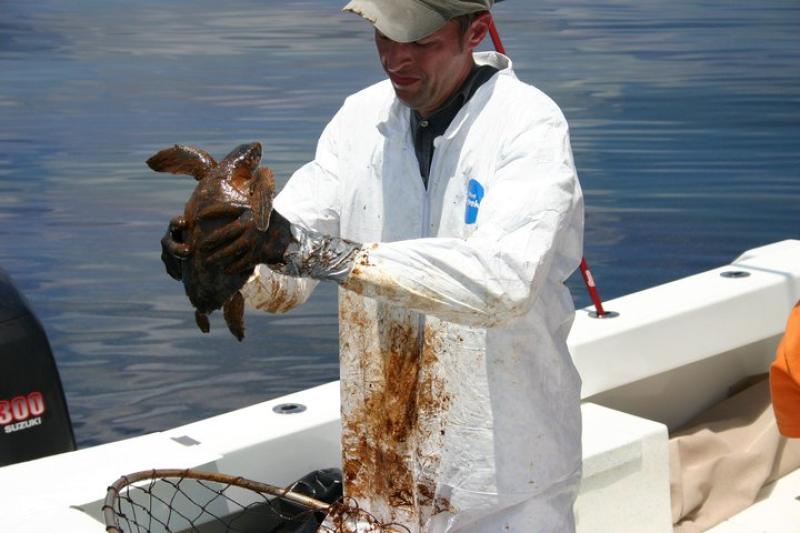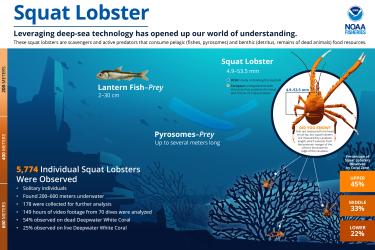What are your role and responsibilities?
I am a veterinary medical officer with NOAA Fisheries in the Office of Protected Resources. My role is to help recover threatened and endangered sea turtles. I work in a variety of areas related to sea turtle health and welfare. These include helping to monitor and investigate causes of death and stranding, human impacts of sea turtle populations, and diseases that affect sea turtles. I also help plan for and respond to unfortunate events, such as oil spills, algal blooms, and cold-stunning events.
What is your educational background and how did you come to NOAA Fisheries?
I have always loved animals since my early years, and that fascination was focused on reptiles fairly early on. As I went through my education, I became interested in the conservation of wildlife and curious about the solutions to help imperiled species and their habitat. I also love the ocean. And luckily I found a career that merges all of those passions; my career really is a dream combination of my greatest interests in life.
My path to NOAA began with working with wildlife as a biologist early in my career and then as a veterinarian. I found my interest in sea turtles in academia. I studied them in graduate school at the University of Florida in the 2000s while also working closely with the Florida Fish and Wildlife Conservation Commission. Through that opportunity I began working in areas outside of Florida and was introduced to the NOAA’s National Sea Turtle Program. As I broadened my career, I started working with NOAA, initially as a contractor. Then the Deepwater Horizon oil spill happened in 2010. That expanded NOAA’s need for a program veterinarian as we endeavored to understand how the spill affected sea turtles. Since then it's been nonstop, and each year brings a new list of challenges.
What does your day-to-day look like?
The great thing about this job is that it is different every day. I work on a broad range of topics including wildlife welfare, health, and mortality. My days can include performing a necropsy (animal autopsy) or consulting with colleagues about sea turtle rehabilitation. I might participate in planning efforts so we are prepared for the next large event or disaster, or develop best practices for how we interact with protected species. So I might be behind my computer or in the lab or on a boat—it really depends what issues are going on at the time.
What about during crisis situations like the cold stun event in February?
During an event like the Gulf Coast cold stun event in February, I’m functioning as part of a team. We work with all of our partners in rehabilitation, in the stranding network, and at the state level to undertake a variety of large and intense tasks. Together we have to sort through the logistical challenges of managing thousands of stranded animals where time is of the essence. We have to identify the priorities and available resources so we can come up with practical solutions to the different problems that inevitably emerge during the event. People look to NOAA to determine what are the best decisions for the sea turtles so that as many as possible are returned healthy back into the wild.
There are two main types of cold stun events. For both, we rescue the sea turtles as soon as we safely can. Then we assess their condition and monitor the sea turtles until we can safely release them into suitably warm water, either from shore or boats. In the Northeast, turtles are exposed to colder temperatures for longer so we have animals that tend to be sicker and need longer rehabilitation. In the South, the cold stun events come on rapidly. In these situations, most of the sea turtles just need to be warmed up gradually and then they respond quickly after being brought in from the cold. Following rescue we examine them and determine which ones need more care like going to a rehabilitation facility to get extra attention. Most of the turtles tend to be ready to go within a few days, then we wait for warmer weather to release them. As the sea turtles warm up, they become more active. They need to be more managed so they do not injure themselves or other sea turtles—this can be a challenge with thousands of animals. We simultaneously monitor the weather and water temperatures to find locations where turtles can be released. Sometimes this requires us to take them to warmer water out in the ocean, as in the latest event in Texas.
What can the public do to protect sea turtles?
As a member of the public, the best things you can do are be informed and understand the main threats to sea turtles.
Protect key nesting areas—and we have some important ones in this country. Keep nesting beaches dark and safe for sea turtles by turning off, shielding, or redirecting lights visible from the beach. Lights disorient hatchling sea turtles and discourage nesting females from coming onto the beach to lay their eggs. Remove recreational beach equipment like chairs, umbrellas, boats at night so sea turtles are not turned away. Fill in holes and knock down sandcastles before you leave the beach, because they can become obstacles for nesting turtles or emerging hatchlings.
Be an informed seafood consumer—ask where and how it was caught. Choose seafood caught in ways that do not harm or kill sea turtles.
Learn ways that you can help protect sea turtle habitat—whether it be helping to implement measures to combat climate change or improve water quality. Many things we do on land affect our oceans. Reduce your plastic use. Carry reusable water bottles and shopping bags. Disposable plastics often end up in the ocean and can negatively impact marine animals. Discarded and lost fishing line is particularly harmful to sea turtles so always properly dispose of fishing line and tackle.
What advice do you have for someone who is interested in a similar career?
If you are considering a career as a wildlife veterinarian, particularly one with a conservation focus, in addition to studying hard, seek out a diverse range of experiences with wildlife. Endeavor to be a strong biologist as well as a veterinarian. A day’s work might entail trying to understand the effects of pollution, disease, or human activity, so a broad knowledge base is very important. Stay informed about key conservation issues and refine your communication skills—wildlife veterinarians often work with others as part of a problem-solving team. Maintain a high bar—always ask yourself if you are making a difference and are being of service to the animals you're helping to protect.


